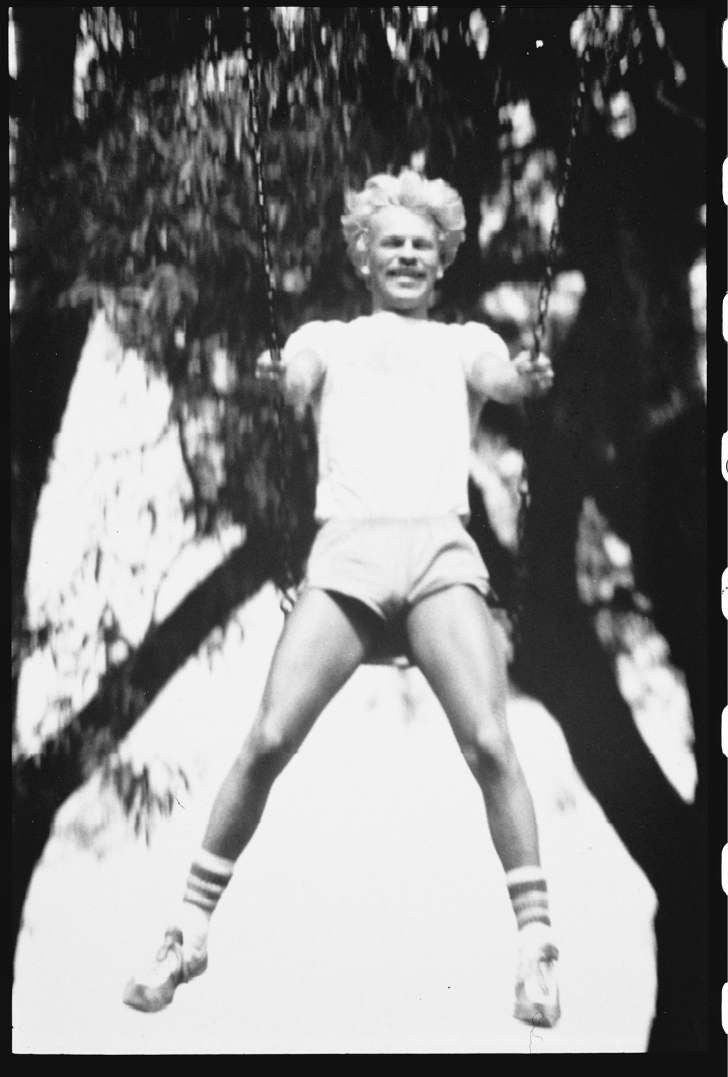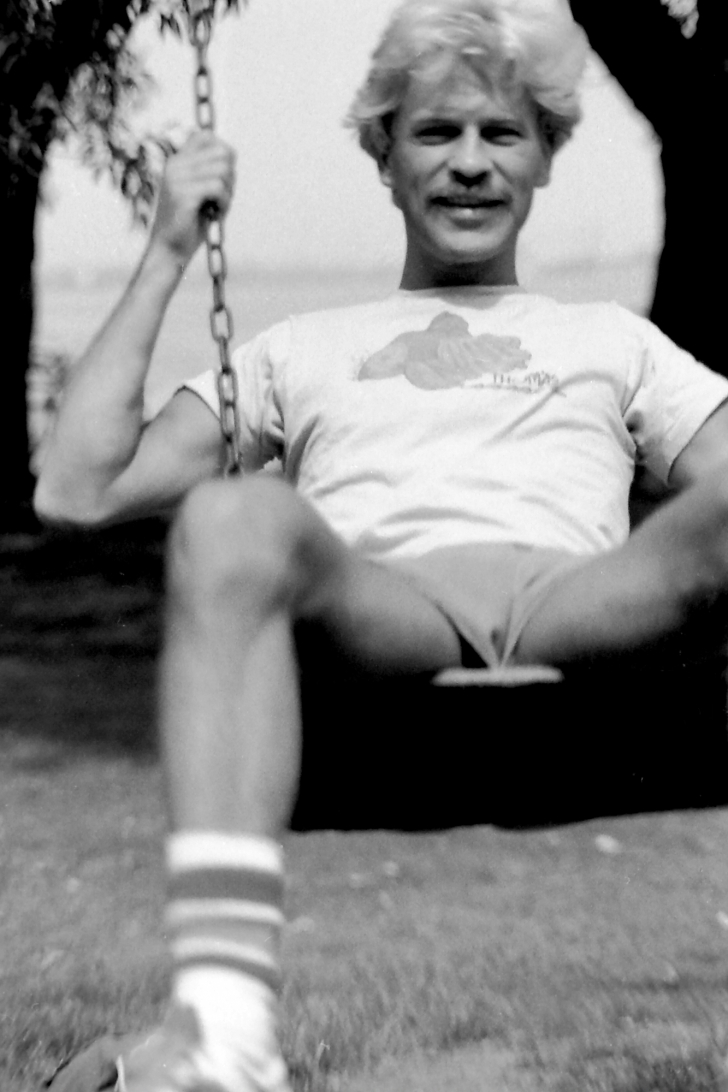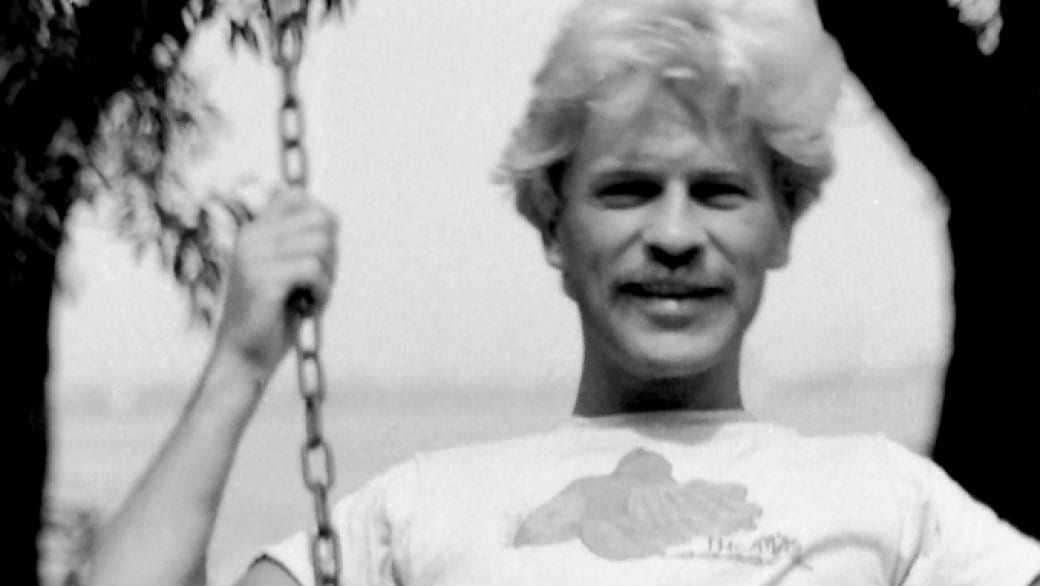The images are an unusual mix of sexual playfulness and innocence. A smiling, handsome blond man swings gleefully in a park, legs spread. Taken in 1980, they speak to a gay culture that hadn’t yet been knocked senseless by AIDS; the smiling man seems to be saying, “Come and get me.”
Rand Gaynor took the photos of his friend Gaétan Dugas in a Toronto park on a warm afternoon. They both lived in Halifax at the time, but bumped into each other by sheer coincidence.
“Gaétan was very sexual, he was always cruising,” recalls Gaynor, who now runs a gift shop in Halifax. “I started taking some photos and he insisted I get his crotch, as he was wearing short shorts and was going commando [not wearing any underwear]. He was like, ‘Get a picture of my dick!’ It was typical of him — he was being outrageous.”

Gaynor, now 67, never imagined the photos would become sought after. In 1987, when panic about the AIDS epidemic was running rampant, journalist Randy Shilts would release his tome on the then-fatal disease, And the Band Played On: Politics, People, and the AIDS Epidemic. The book was noteworthy for its extensive documentation of the deaf ear the Reagan administration had for anything related to the disease — no real prevention campaign, no outreach to the gay community (nor other minority communities impacted by the epidemic), and not even a public mention of the disease by the commander in chief for years.
But the mainstream media immediately picked up on a different story: Shilts’ research led him to the theory of Patient Zero. That was supposedly Dugas, a promiscuous gay flight attendant who had died of AIDS and who, the research seemed to suggest, may well have brought HIV (the virus that causes AIDS) to North America, due to his extensive travel and his promiscuity.
Important to note that Shilts never explicitly stated that Dugas had brought AIDS to North America, but that “there’s no doubt that Gaétan played a key role in spreading the new virus from one end of the United States to the other.”
The book began to get some media attention, but Patient Zero only became a household term after 60 Minutes — then one of the highest-rated shows on network television — did an entire segment on the idea. After that, the theory became fact, with news outlets like Time and The New York Post stating unequivocally that Dugas had brought the epidemic to America.
Gaynor learned the photos he had taken of his late friend were of interest when he got a call from a reporter at a Halifax tabloid daily.
“They were always running racy headlines and trashy stories,” Gaynor says. “They said they were going to send someone over right away to pick up the photos and they said they’d pay me $50 for them. I told them bluntly that the photos were not for sale. ‘You’re not going to make him into a monster,’ I said to him.”

After hanging up the phone, a friend who happened to be with Gaynor advised him to take the photos somewhere else.
“Where?” Gaynor asked.
“Why not go to LIFE magazine? His name is everywhere now. I bet they would be interested.”
Gaynor followed through, and indeed the swing-shot series of photos of Dugas appeared in a two-page spread in LIFE, and were later reprinted in some European newspapers and magazines. “I got $200 for them. They paid by the square inch.” (That the photos would appear in LIFE was itself ironic, given that AIDS activists were critical of the magazine’s sensational coverage of the epidemic.)
While the Patient Zero theory was being widely disseminated throughout the media landscape, most gay men were dubious, at best.
Toronto filmmaker John Greyson even made a musical comedy about Dugas, Zero Patience, a 1993 feature that pointed out that Dugas became a convenient scapegoat, a modern-day vampire story, to explain how AIDS arrived in America.
“The whole point of my musical was that Gaétan was egregiously villainized by Shilts and the mass media,” Greyson says now. “And perhaps for the crass cynical reasons of trying to make And the Band Played On a bestseller.”
In fact, Dugas responsibly cooperated with scientists who were first researching the disease, and the blood samples he donated helped the scientific community to establish the connection between HIV and AIDS.
Even the name “Patient Zero” was erroneous: the Center for Disease Control originally referred to Dugas as the letter “O,” meaning he was from outside California. Somehow, that letter got reinterpreted as a zero.
The memories of Dugas and his photos were stirred up for Gaynor a few weeks ago, when scientific researchers announced new evidence indicating that AIDS arrived in North America in the early 1970s. That means the entire Patient Zero theory is bunk.
Gaynor says he believed the Patient Zero theory when he initially read about it. “It seemed believable and it was so widely reported. It seemed as though it could make sense.”
“The Halifax community was so small, everyone knew everyone,” Gaynor recalls. “Gaétan lived here because Air Canada based its flight attendants here for a number of years. There was something exotic about them. They were worldly and had trendy clothes. Their lifestyle was to be envied. It was glamorous.
“Gaétan had a wonderful style about him, a great wit. And he loved sex. He said it was his goal to have sex with a different man every night. He was a party boy. He loved being outrageous.”
Gaynor says he eventually lost touch with Dugas, as Air Canada moved its flight attendants out of Halifax. He doesn’t clearly recall how he heard about Dugas’ death in 1984. “I had had so many friends die at that point, or who [were] sick. It wasn’t a huge surprise. I knew 30 people who died of AIDS.
“I was experiencing so much sadness it was hard to take it in.”

 Why you can trust Xtra
Why you can trust Xtra


